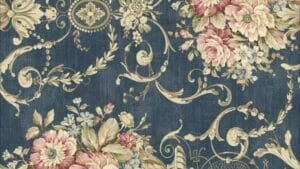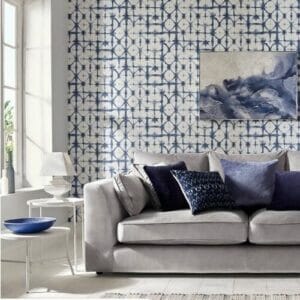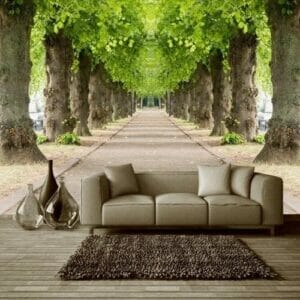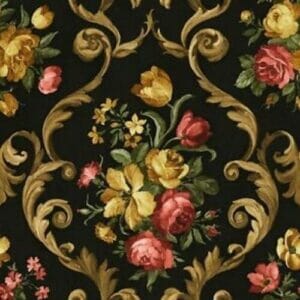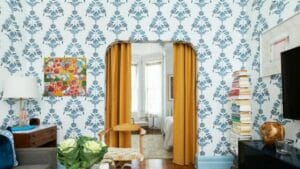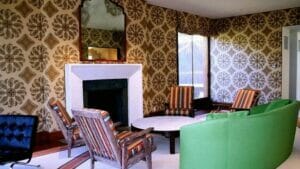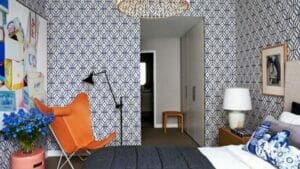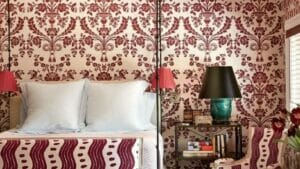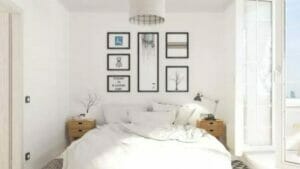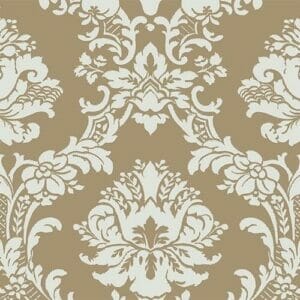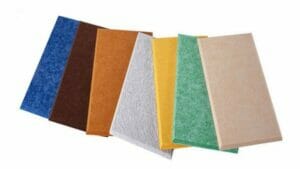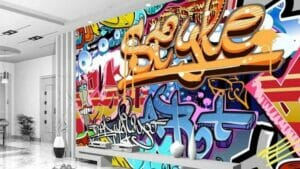When we say traditional, we’re not talking about your grandmother’s wallpaper. We mean the type of non-woven wallpaper that is not self-adhesive. Traditional Wallpaper typically needs an adhesive that you must soak or paste on wall before you apply paper. In this page we talk about Traditional Wallpaper | Removable Wallpaper and Covers Design.
Contents
Traditional Wallpaper:
Wallpaper is material use in interior decoration to decorate interior walls of domestic and public buildings. It usually sold in rolls and is applied onto wall using wallpaper paste. Drawing on distinguished design elements, often with Renaissance and Victorian influence. These wallpaper patterns are timeless choice. Traditional wallpaper designs have irresistible elegance because they stand test of time.
Wallpapers can come plain as “lining paper”, textured with regular repeating pattern design. Much less commonly today, with a single non-repeating large design carried over set of sheets. The smallest rectangle that can tiled to form whole pattern is known as pattern repeat. This collection includes gracious warmth of vintage florals and everlasting luxury of appealing damask pattern with traditional stripes and textures.
A fine woven fabric that comes with self adhesive backing. Simply peel the sticker backing to install, making process mess free. The product can be reposition during installation. The wall covering is also easy to remove by taking corner and gently pulling. A matte finish with highest color reproduction or whiteness. There are many ways to attach wallpaper to your walls which include: paste the wall, paste the paper, and peel and stick.
It is apply by first adhering wallpaper paste to wall and positioning wall covering over. Wipe seams as needed. Digitally printed with water based inks. Traditional Wallpapers are Non-toxic. Wallcovering must be install only after underpainting is completely dry. Wallpaper can also be use to personalize temporary homes like dorms and rentals. Since it can be easily installed and removed without leaving traces.
Traditional Wallpaper Images:
Wallpaper History:
Why we use Wallpaper?
Wallpaper may be more expensive than paint but it has many types. Some of which are quite affordable.
- It is available in wide variety of designs, patterns and surface finishes.
- There are many ways to attach wallpaper to your walls which include paste wall, paste paper, peel and stick.
- Wallpaper and especially peel and stick can be easily remove and replace.
- Some types can last for more than 15 years.
- Many wallpaper types are washable.
- Some types can be use for busy areas at home owing to its durability and easy maintenance.
- Wallpaper can also be use to personalize temporary homes, like dorms and rentals.
- Since it can be easily install and remove without leaving traces.
- It can cover uneven walls and hide defects easily with little initial preparations.
- Wallpaper can be consider an eco-friendly. Since it can be purely manufacture from natural materials and its adhesives do not contain harmful chemicals.
Why we can not use Wallpaper?
Here we give some reason why we not use wallpapers:
- It is more expensive than paint.
- Traditional wallpaper is difficult to maintain and remove.
- The edges may separate from wall. Especially in damp weather and need to be reattach or paste.
- Patterns need to matched and well aligned together.
- That requires a good deal of accuracy.
- It can’t be apply on raw concrete and texture walls.
- Wallpaper colors may affected by light and shadow. Parts that exposed to sunlight daily could burn out.
- The more fragile types of wallpaper may not last more than 5 years.
Background:
Wallpaper is a nonwoven or woven backing, decoratively printed for application to walls of residence or business. Wallpaper is not consider essential to decoration of structure. However, it become primary method by which to impart style, atmosphere or color into room.
The wallpaper industry divided manufacture of wallpaper into those used in residences and those hung in businesses or other public buildings. The two categories of paper differ in weight, serviceability and quality standards. Residential use wallpapers made from various materials and can be purchase pre-paste or un-paste.
There are no mandated serviceability tests for residential papers. The commercial grade wallpapers are divide in to categories based on weight, backing composition, laminate and coating thickness. All commercial use wallpapers must have vinyl surface and pass rigorous physical and visual tests as mandated by Chemical Fabrics and Film Association.
Raw Material:
Wallpaper consists of backing, ground coat, applied ink and sometimes paste on backing use to adhere paper to wall. Non-woven backings can be of ground wood, wood pulp or wood pulp. Its backing with synthetic material. Woven backings are those made of sturdy woven textiles such as drill. The woven backing then coated and printed.
The ground coat is background color laid on surface which receives print pattern. Coatings or laminates made of latex or vinyl and render paper durable and strippable. Ground coats also include additives that enhance the ease of handling, opacity and drapability of the paper.
The paper printed with inks composed of pigment and vehicle which ties ink to backing. Solvents can be acetone or water. For example, Printers choose inks carefully as solvents they include affect drying time and production time between color applications of the paper.
Pastes may or may not be apply to wallpapers. If they usually made up of cornstarch or wheat starch and are apply wet to backing. Pre-pasted wallpapers must be rewetted for adhesion to the wall.
Design:
New wallpaper designs are generally derive from sketches purchase from staff designer or freelance wallpaper designer. The artist lays out design on tracing paper and completes at least partial pencil sketch. The marketing and design staff will then decide if paper is right “fit” for specific look or line. If design accepted, artist produces full scale color sketch in various colors and palettes.
After printing process choosen, sketch fine tuned to fit requirements of printing process. The pattern is send to engraver or screen maker. Once cylinder or screens are in place and few pattern repeats are print. A sample wallpaper printed to test color and pattern. When okayed, paper commercially printed in large runs.
Before pattern printed, backing must be coated with ground color. Ground wood sheets coated with color vinyl which varies in thickness. It depending on durability and strippability of paper under production. Vinyl may also be laminate to backings for exceptional serviceability. Wood pulp sheets coated with one or all of following: kaolin clay for drapability, titanium dioxide for opacity and latex for ease in handling and color.
Each wallpaper printing company conducts visual inspections in form of spot checks or representative product samplings. It ensure their product conforms to certain values established by manufacturer. Generally, wood pulp and ground wood paper backings are given visual checks to see if there is foreign matter imbed in backing. When woven backings are receive by printers, printer checks thread count and physically tests fabric for minimum requirements.
Quality Control:
The Chemical Fabric and Film Association has devise quality standards for commercial use vinyl coated wallcoverings. The various categories of commercial use papers have different physical test requirements specified in CFFA Quality Standard documents.
All papers must undergo testing on such attributes as minimum coating weight, tensile strength, tear strength, coating adhesion, abrasion resistance, flame spread, smoke development, shrinkage, heat aging and stain resistance etc.
Each wallpaper printing company conducts visual inspections in form of spot checks or representative product samplings. It ensure their product conforms to certain values established by manufacturer. Generally, wood pulp and ground wood paper backings are give visual checks to see if there is foreign matter imbed in backing. When woven backings are receive by printers, printer checks thread count and physically tests fabric for minimum requirements.
As backing is print, constant visual checks ensure proper adhesion of vinyl to backing, correct color, no streaking or unwanted shading, trimmed edges etc. Representative samples are physically and visually examine before being cut into smaller rolls.
Conclusion:
Wallpaper is material use in interior decoration to decorate interior walls of domestic and public buildings. Traditional wallpaper designs have irresistible elegance because they stand test of time. The wall covering is also easy to remove by taking corner and gently pulling. When we say traditional, we’re not talking about old wallpaper. We mean type of non-woven wallpaper that is not self-adhesive. Traditional Wallpaper typically needs an adhesive that you must soak or paste on wall before you apply paper.
